Key takeaways:
- Storytelling in workshops enhances engagement by creating emotional connections, simplifying complex concepts, and prompting participant reflection on personal experiences.
- Effective storytelling techniques include using conflict and resolution, pacing for suspense, and incorporating sensory details to make narratives more immersive.
- Relatable narratives that draw on shared experiences, industry issues, and humor foster camaraderie and deeper connections among participants.
- Personal storytelling can turn vulnerabilities and setbacks into opportunities for group discussion, making content more relatable and fostering a supportive learning environment.
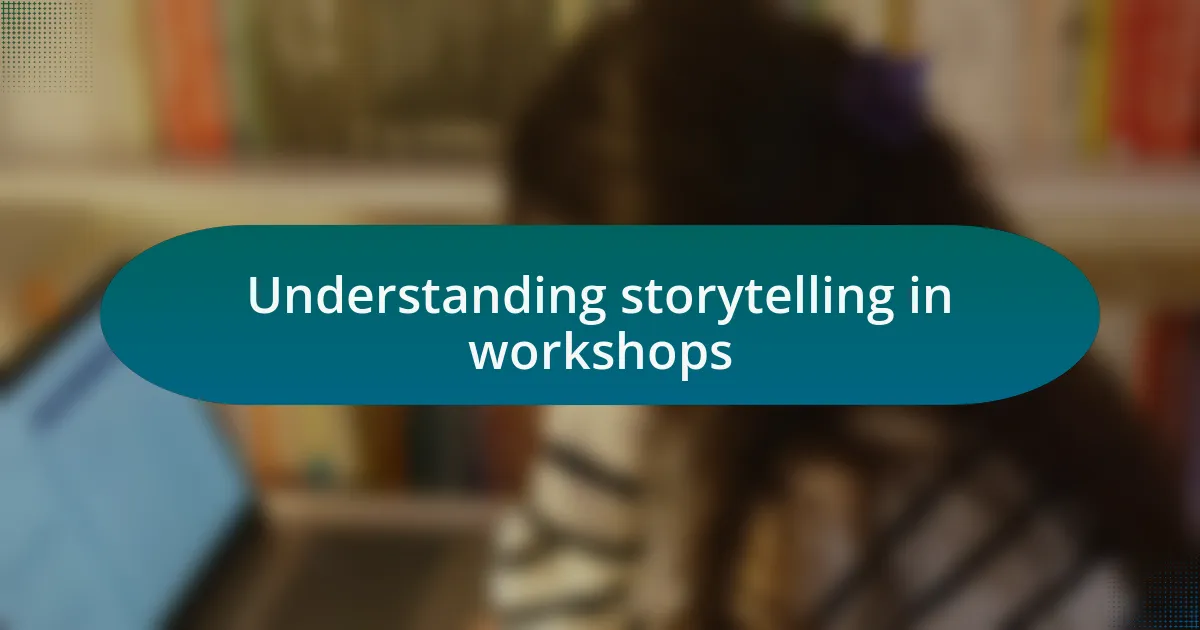
Understanding storytelling in workshops
Storytelling in workshops serves as a bridge connecting participants and the content being presented. I recall a time when I led a tech workshop aimed at fostering innovation among software developers. As I shared a story about a project’s unexpected failure, I noticed how the room shifted from a passive listening state to an engaging discussion, as attendees began to relate their own experiences.
In my experience, stories add a layer of emotional connection that facts and figures often miss. Have you ever been in a situation where statistics seemed dry and unengaging? I have, and I’ve found that weaving in personal anecdotes, like the time I pivoted a project based on team feedback, transforms the learning environment into something more vibrant. Suddenly, the audience feels invested and inspired to contribute their thoughts.
Furthermore, storytelling helps in simplifying complex concepts. I often share scenarios that illustrate intricate tech ideas, enabling participants to visualize and better grasp the material. By connecting abstract theories to real-world applications, I’ve seen many participants light up with comprehension, as if a light bulb just turned on in their minds—there’s nothing more rewarding than that moment of clarity.
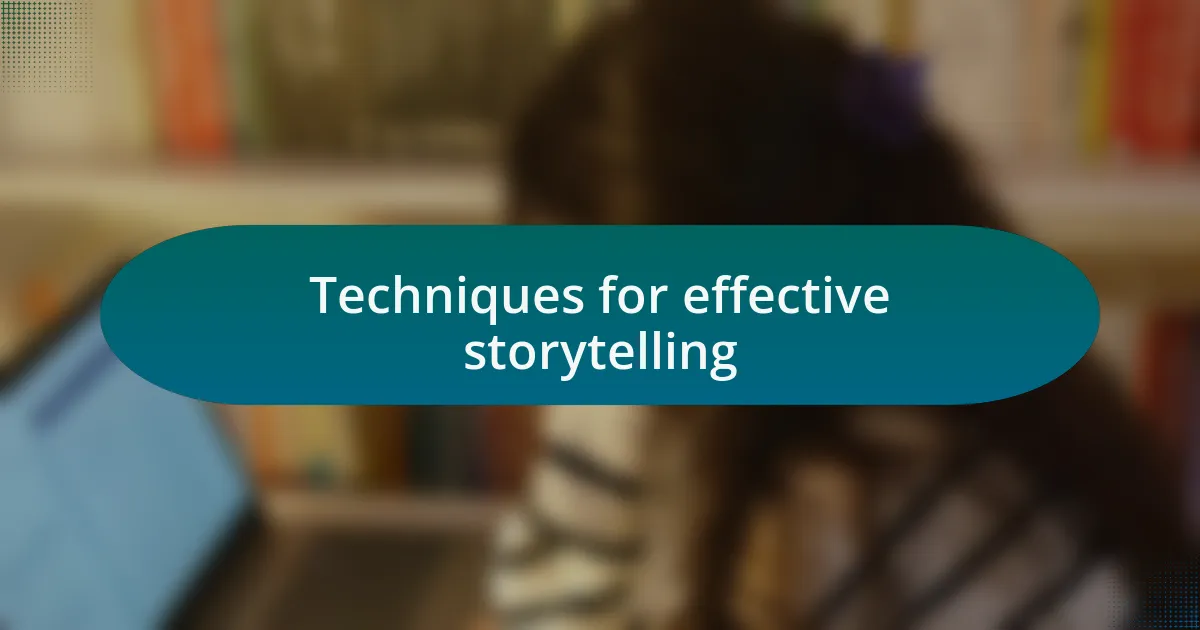
Techniques for effective storytelling
One effective technique for storytelling in workshops is to utilize the power of conflict and resolution. I remember when I facilitated a session on overcoming challenges in tech projects. I shared a story about a major bug that almost derailed my team’s launch. By detailing the moments of tension and eventual resolution, I could see participants leaning in, their curiosity piqued by how we navigated a difficult situation. This approach not only keeps listeners engaged but also mirrors the challenges they face, prompting them to reflect on their own experiences.
Another impactful technique is pacing; knowing when to build suspense or drop a pivotal insight can greatly enhance a story’s effectiveness. In one workshop, I opted to slowly unveil a crucial turning point in my narrative about team dynamics. As I paused, the room felt charged with anticipation, transforming the atmosphere into one of shared investment. This technique often leads participants to become more emotionally involved, prompting discussions that explore their insights and experiences in a more meaningful way.
Lastly, I find that incorporating sensory details makes stories more immersive. During a recent workshop, I shared a vivid account of a brainstorming session, describing the flood of ideas and the palpable energy in the room. I urged participants to recall their moments of creativity, which led to a lively exchange of thoughts. This method not only paints a rich picture but also invites others to connect deeply with the narrative, as they can see and feel what I experienced. Isn’t it fascinating how our shared memories can create a sense of belonging in a learning environment?
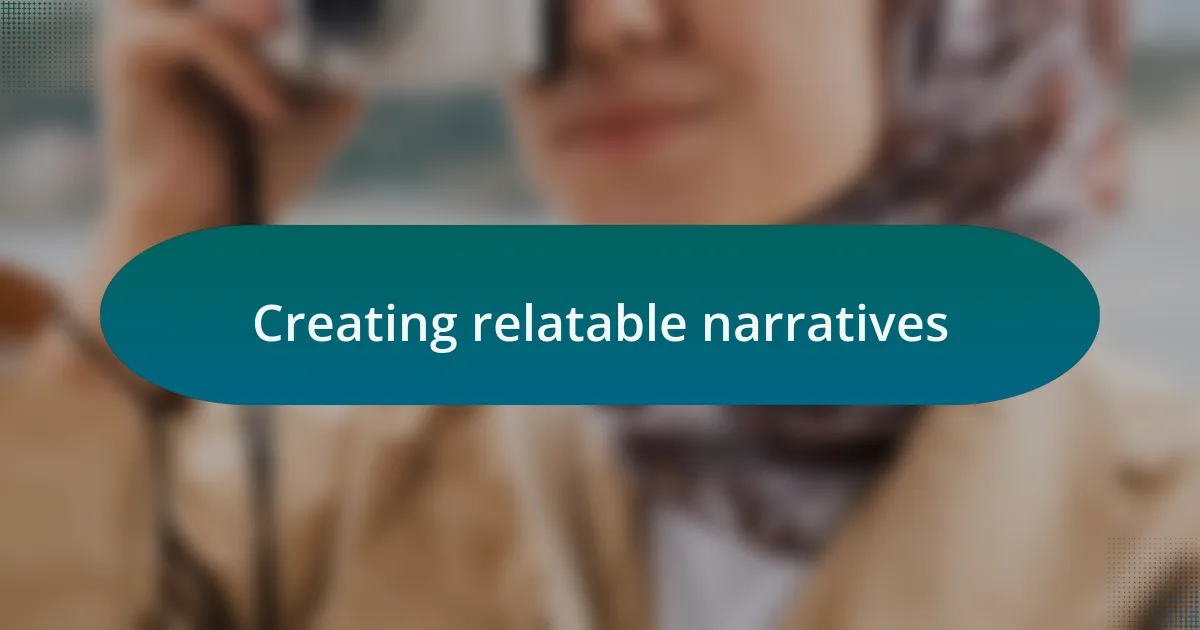
Creating relatable narratives
Creating relatable narratives often hinges on our ability to connect with shared experiences. I recall a time when I shared a story about the first significant technical failure I faced in my career. I described the panic and bewilderment swirling around our team as those dreaded error messages flooded our screens. The moment I expressed my feelings of frustration and vulnerability, I could see a wave of nods in the audience; they resonated with that moment of helplessness. Have you felt that way, too? It’s in these vivid, shared emotions that narratives truly come alive.
Moreover, drawing parallels between personal challenges and industry-wide issues can deepen understanding. During one of my workshops, I illustrated how a miscommunication during a project impacted timelines. As I recounted the confusion and stress that ensued, I could tell participants were reflecting on their own similar situations. How often do we overlook the importance of clear communication? By highlighting these universal struggles, the narrative transforms into a collective mirror, showing us all that we are not alone in the complexities of our work.
The use of humor can also serve as an effective bridge in storytelling. I love to incorporate light-hearted anecdotes from my own journey, like the time I accidentally shared the wrong presentation slide in front of an important client. Everyone laughed, and suddenly, the atmosphere shifted; we were all on the same wavelength. Isn’t it reassuring to know that even experts stumble sometimes? By humanizing our experiences, we foster camaraderie among participants, making it easier for them to engage with the content on a personal level.
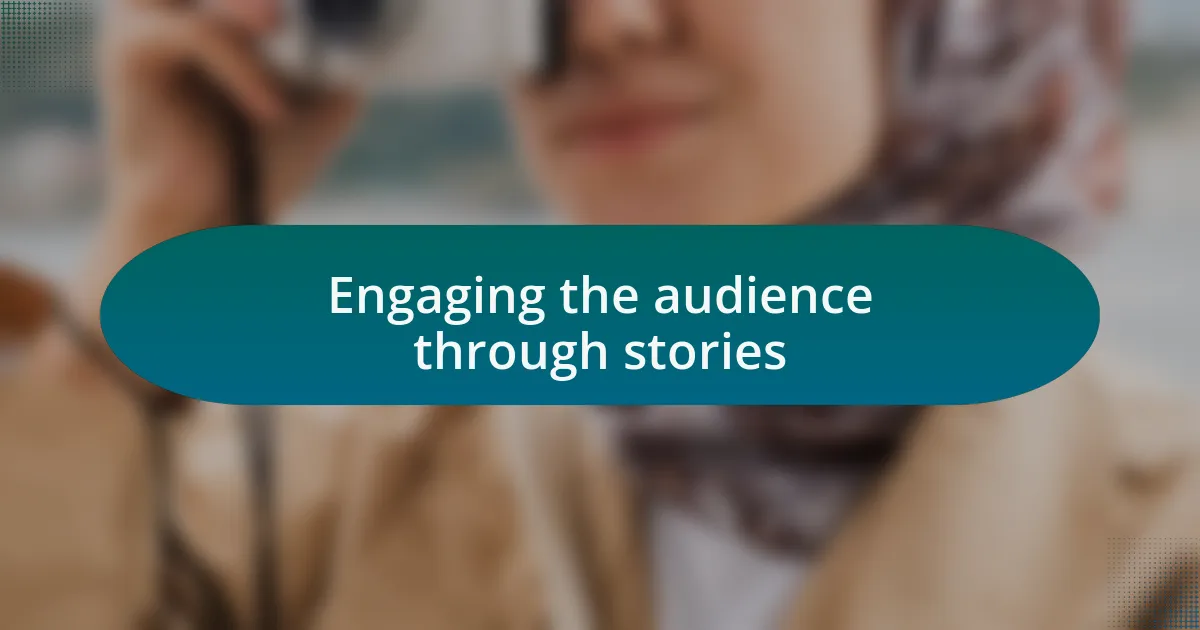
Engaging the audience through stories
Stories have a unique power to elevate engagement in workshops. I remember a session where I recounted a dramatic moment from a crucial project—a system crash moments before a major demo. The collective gasp from the audience told me they were right there with me, feeling that same knot of anxiety. Have you ever faced a do-or-die moment at work? Sharing these high-stakes narratives not only captivates but also allows participants to reflect on their own experiences, creating a bond that deepens their connection to the topic.
Moreover, weaving in elements of surprise can keep the audience’s attention hooked. Once, I shared a tale about a misadventure with a cutting-edge technology that I had just started experimenting with. I described how my excitement quickly turned into panic as I mistakenly activated a feature that sent all my data into a dizzying chaos. The room erupted in laughter, and I could see eyes lighting up with intrigue. This unexpected twist not only entertained but illuminated the complexities of innovation—just as we embrace new tech with enthusiasm, we must also be ready for the unforeseen hiccups that come with it.
Using personal stories as a vehicle for insights can also pave the way for deeper conversations. During a workshop on team dynamics, I reflected on the hustles and missteps encountered during my first collaborative project. Participants leaned in as I shared the anxieties of conflicting ideas and the eventual magic that happened once we found common ground. Isn’t it fascinating how vulnerability can spark a dialogue about our own challenges in teamwork? This sharing of our journeys fosters an open environment, where everyone feels encouraged to voice their thoughts and experiences.
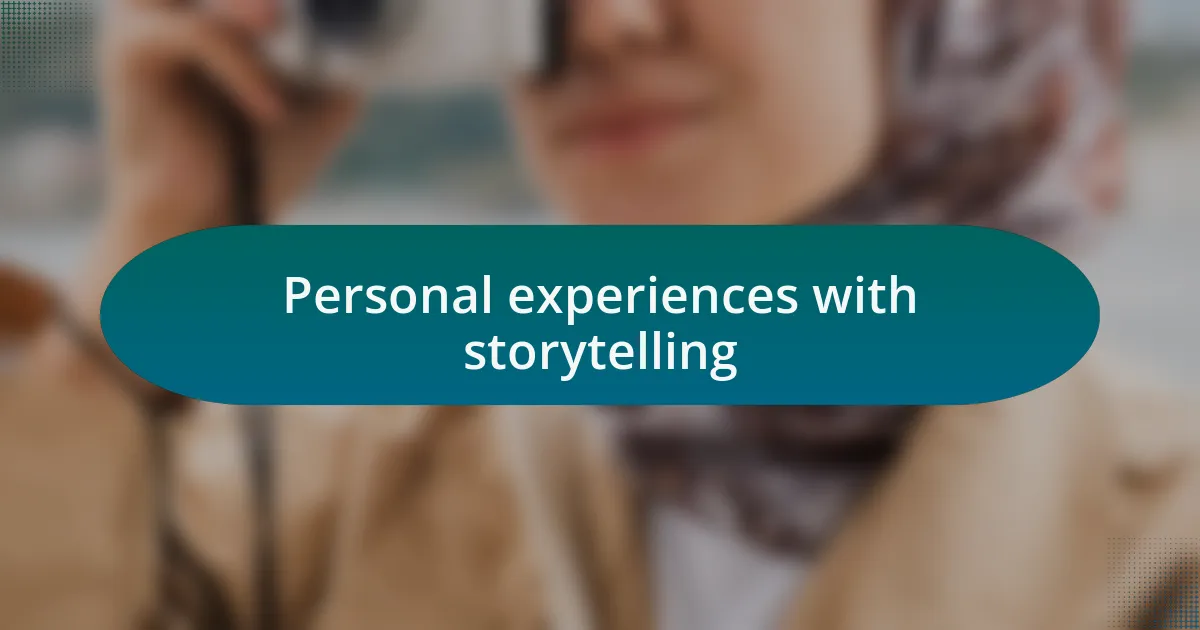
Personal experiences with storytelling
Reflecting on my journey with storytelling, I can’t help but recall a workshop where I shared how I overcame my fear of public speaking. I opened up about a time at a tech conference where my hands shook as I presented—my stomach in knots. Everyone could relate to that feeling of vulnerability, and suddenly, the atmosphere shifted. Have you ever felt that spark of camaraderie when someone shares their struggles?
I also once illustrated the importance of adaptability by recounting a story about a presentation gone wrong. The projector failed at a pivotal moment, and instead of panicking, I embraced the moment, engaging the audience with an impromptu discussion around our shared challenges. It felt liberating, and I noticed how participants began sharing their own experiences with tech mishaps. Isn’t there something powerful about turning a setback into a collaborative experience?
Another memorable experience was during a workshop focused on innovation. I shared an anecdote about a time I almost missed a critical deadline because I was too fixated on perfecting one aspect of a project. The honesty about my struggles resonated with participants, who eagerly chimed in with their stories of near misses. These moments create a sense of intimacy in the room and make the wisdom shared much more relatable. What can we learn from our failures? It’s often these experiences that guide us toward our next successes.